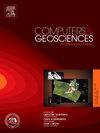基于多任务机器学习模型的地震约束故障检测与表征
IF 4.4
2区 地球科学
Q1 COMPUTER SCIENCE, INTERDISCIPLINARY APPLICATIONS
引用次数: 0
摘要
地质断层检测和表征对于理解跨尺度的地下动力学至关重要。虽然基于地震活动定位分析或地震图像反射面不连续的断层描绘方法已经建立,但集成这两种数据类型的系统方法仍然缺乏。我们开发了一种新的机器学习模型,将地震反射图像和地震活动定位信息结合起来,自动识别地质断层并表征其几何性质。该模型分别对地震图像和地震活动定位图像进行编码,并利用空间通道注意力融合模块对编码后的特征进行融合,以提高对两个输入中重要特征的学习能力。我们设计了一个自动化的策略来生成高质量的合成训练数据和标签。为了提高地震活动性定位图像的真实感,我们加入了随机地震活动性噪声和与一些断层相关的地震活动性定位缺失。通过综合数据算例和两个现场数据算例验证了模型的有效性和准确性。此外,我们还表明,使用小的、特定领域的数据集对训练模型进行微调可以增强其对现场数据应用的保真度。结果表明,将地震活动定位和地震图像整合到一个统一的框架中,可以使端到端神经网络在圈定地下断层及其几何特征方面获得比仅图像检测方法更高的保真度和精度。我们的方法为地质断层表征和地震灾害减轻提供了自适应数据驱动工具,弥合了地震活动定位和基于图像的断层检测方法之间的差距。本文章由计算机程序翻译,如有差异,请以英文原文为准。
Seismicity-constrained fault detection and characterization with a multitask machine learning model
Geological fault detection and characterization are crucial for understanding subsurface dynamics across scales. While methods for fault delineation based on either seismicity location analysis or seismic image reflector discontinuity are well-established, a systematic approach that integrates both data types remains absent. We develop a novel machine learning model that unifies seismic reflector images and seismicity location information to automatically identify geological faults and characterize their geometrical properties. The model encodes a seismic image and a seismicity location image separately, and fuses the encoded features with a spatial-channel attention fusion module to improve the learning of important features in both inputs. We design an automated strategy to generate high-quality synthetic training data and labels. To improve the realism of the seismicity location image, we include random seismicity noise and missing seismicity location associated with some of the faults. We validate the model’s efficacy and accuracy using synthetic data examples and two field data examples. Moreover, we show that fine-tuning the trained model with a small, domain-specific dataset enhances its fidelity for field data applications. The results demonstrate that integrating seismicity location and seismic images into a unified framework allows the end-to-end neural network to achieve higher fidelity and accuracy in delineating subsurface faults and their geometrical properties compared with image-only fault detection methods. Our approach offers an adaptive data-driven tool for geological fault characterization and seismic hazard mitigation, bridging the gap between seismicity location and image-based fault detection methods.
求助全文
通过发布文献求助,成功后即可免费获取论文全文。
去求助
来源期刊

Computers & Geosciences
地学-地球科学综合
CiteScore
9.30
自引率
6.80%
发文量
164
审稿时长
3.4 months
期刊介绍:
Computers & Geosciences publishes high impact, original research at the interface between Computer Sciences and Geosciences. Publications should apply modern computer science paradigms, whether computational or informatics-based, to address problems in the geosciences.
 求助内容:
求助内容: 应助结果提醒方式:
应助结果提醒方式:


